
Refreshing public spaces with non-potable water from the city of Paris
Dense, heavily mineralized cities will increasingly face the phenomenon of heat islands. In Paris, average daily temperatures are already regularly 2°C to 3°C higher than in the rest of the Ile-de-France region. In summer, this can reach differences of 10°C compared to neighboring rural areas. With average daily temperatures predicted to rise by 2°C to 4°C by the end of the 21st century, and an increasing number of heat waves, it is urgent that Paris adapts to climate change. We need to start thinking today about new ways to cool public spaces.
The City of Paris has a unique feature that could provide a solution: its non-potable water network. Designed in the mid-19th century for watering green spaces and cleaning roads, this network draws its water from the Ourcq Canal and the Seine. The infrastructure, consisting of the network and screening plants, produces water that is cheaper and less energy-intensive than drinking water. So how can public spaces be cooled using non-potable water while complying with health standards?
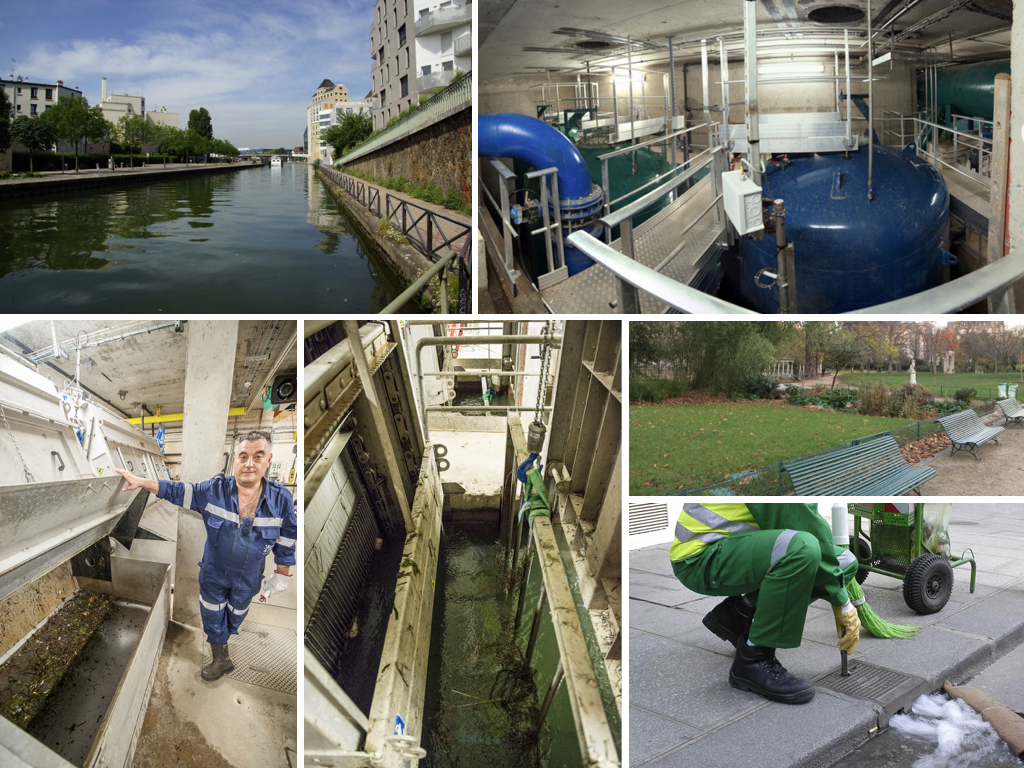

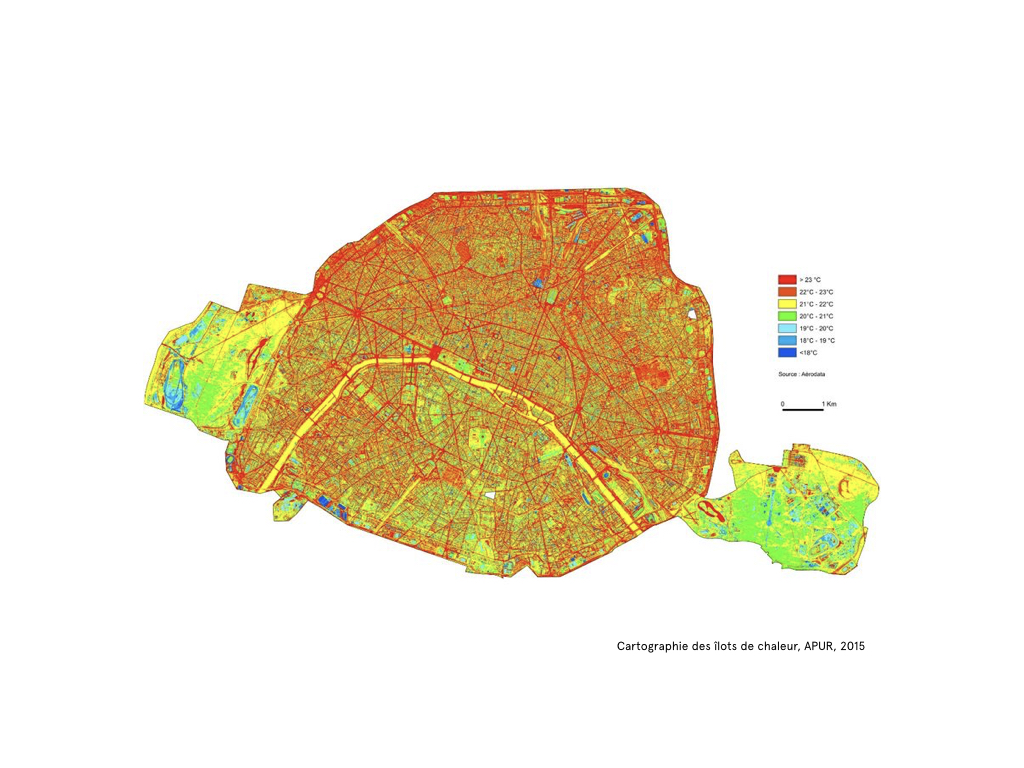

To address this issue, we came up with the idea of a cooling hydrant. Like the sprinkler or washing hydrants found on streets, the Aéro-Seine cooling hydrant is connected to the non-potable water network and is activated during periods of high heat. The device works by overflow. Once opened, the water rises and spreads over a surface made of porous material. This increases the contact surface between the water and the air, helping to cool the ambient air.
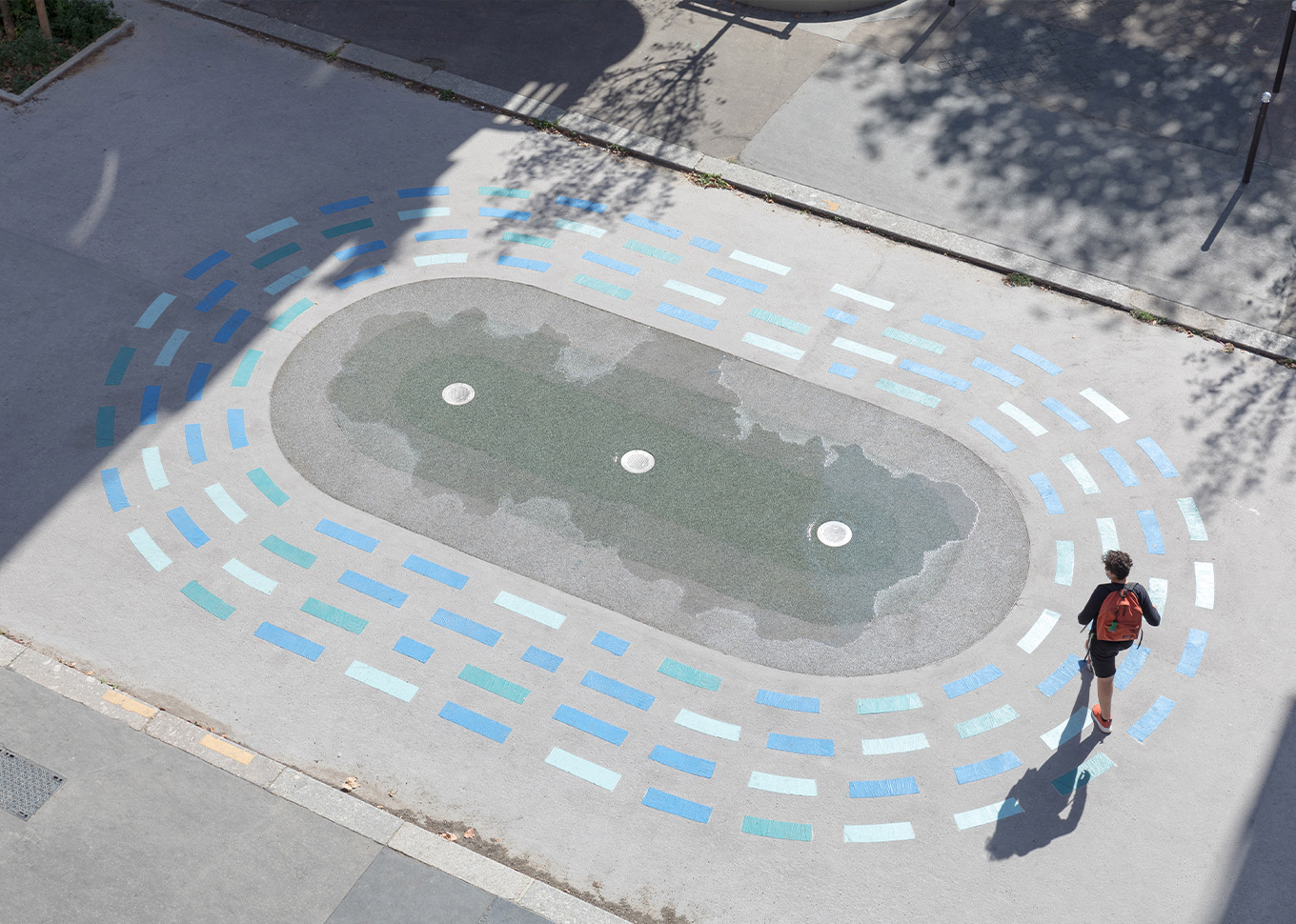
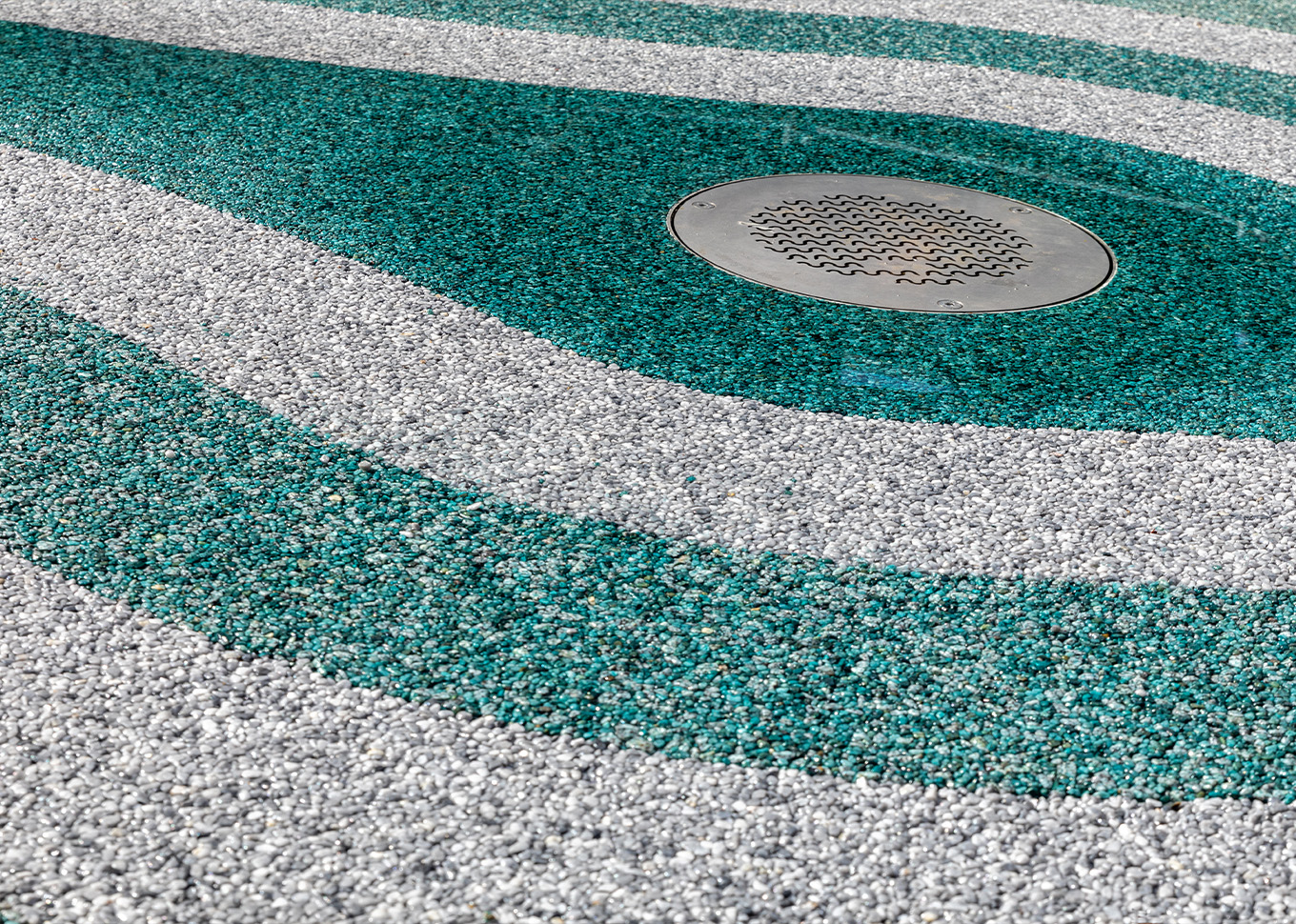

The system was supplemented by road markings designed during workshops with children from the Rue Blanchard neighborhood.

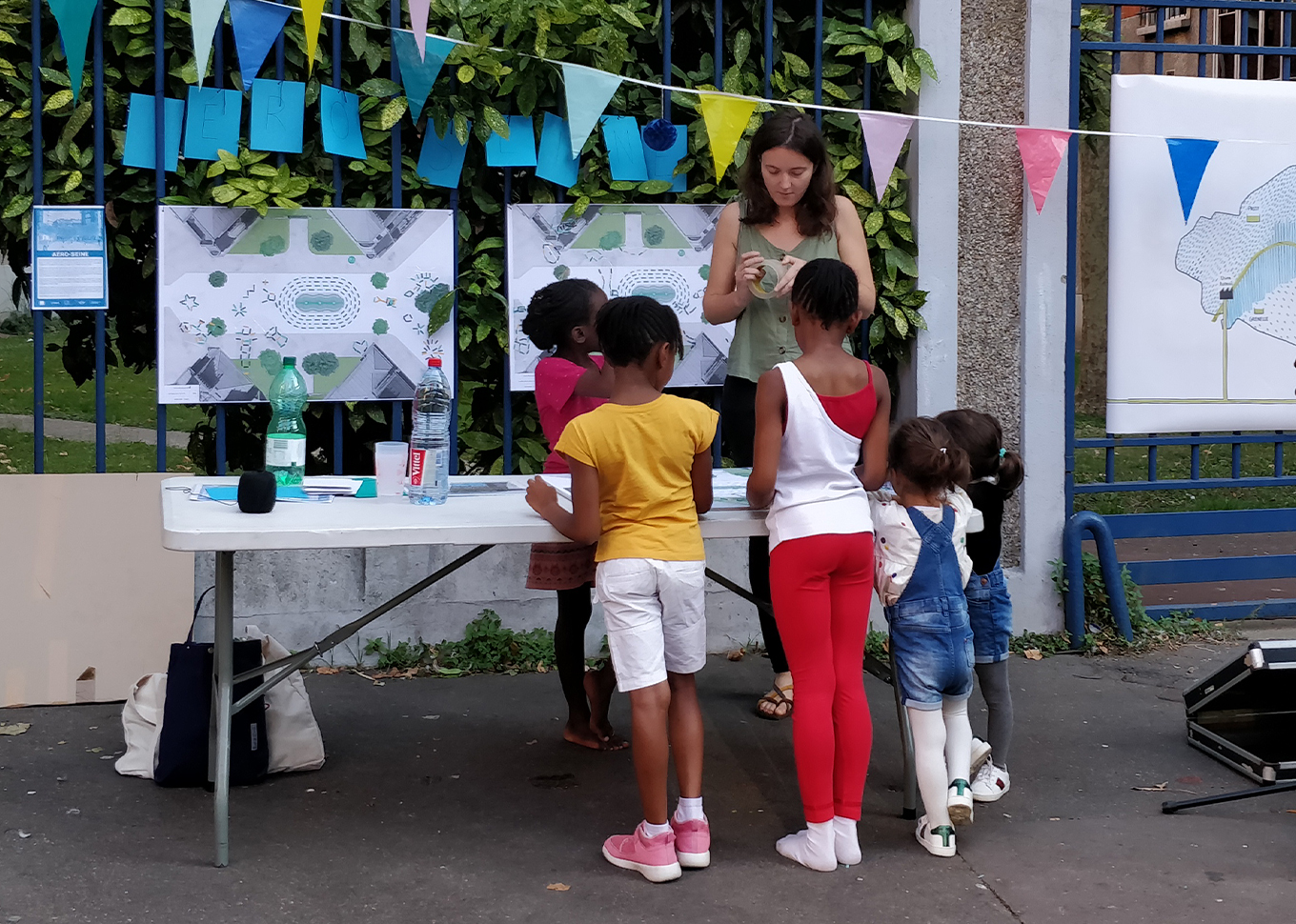
The street redevelopment project was accompanied by a series of assessments by researchers from the DPE (Department of Cleanliness and Water).
Winner of the 2018 FAIRE design contest.
Commissioned by: City of Paris / Pavillon de l'Arsenal
Team: Isabelle Daëron, Studio Idaë (Pauline Avrillon), OGI design office (Philippe Carton, Laurent Straboni, Julien Obry).
With the participation of the City of Paris departments (DPE, DVD, DEVE, Eau de Paris), the 20th arrondissement town hall, the Mission Locale, and researchers from the DPE.
Photo credits: Pierre L’Excellent